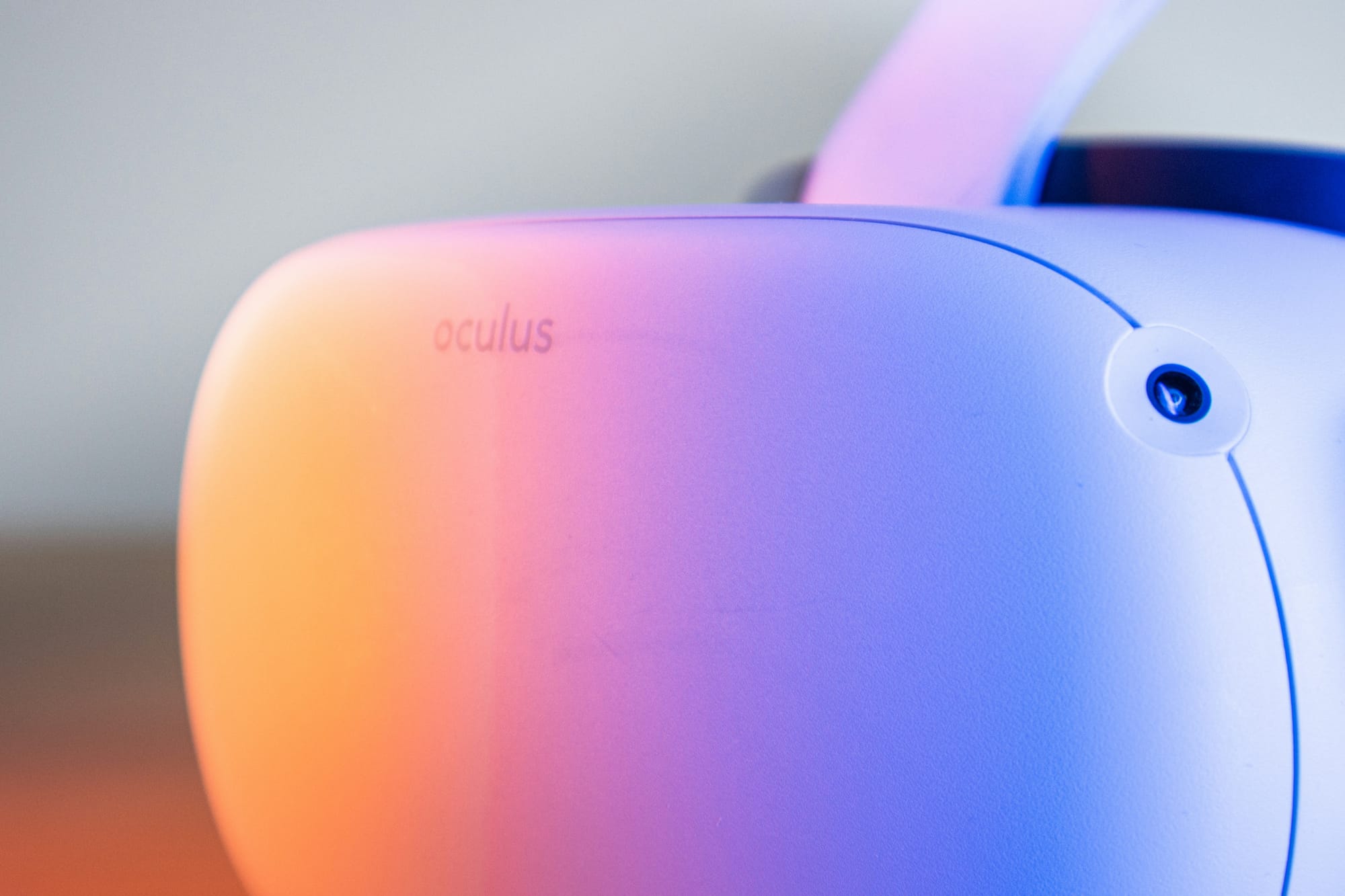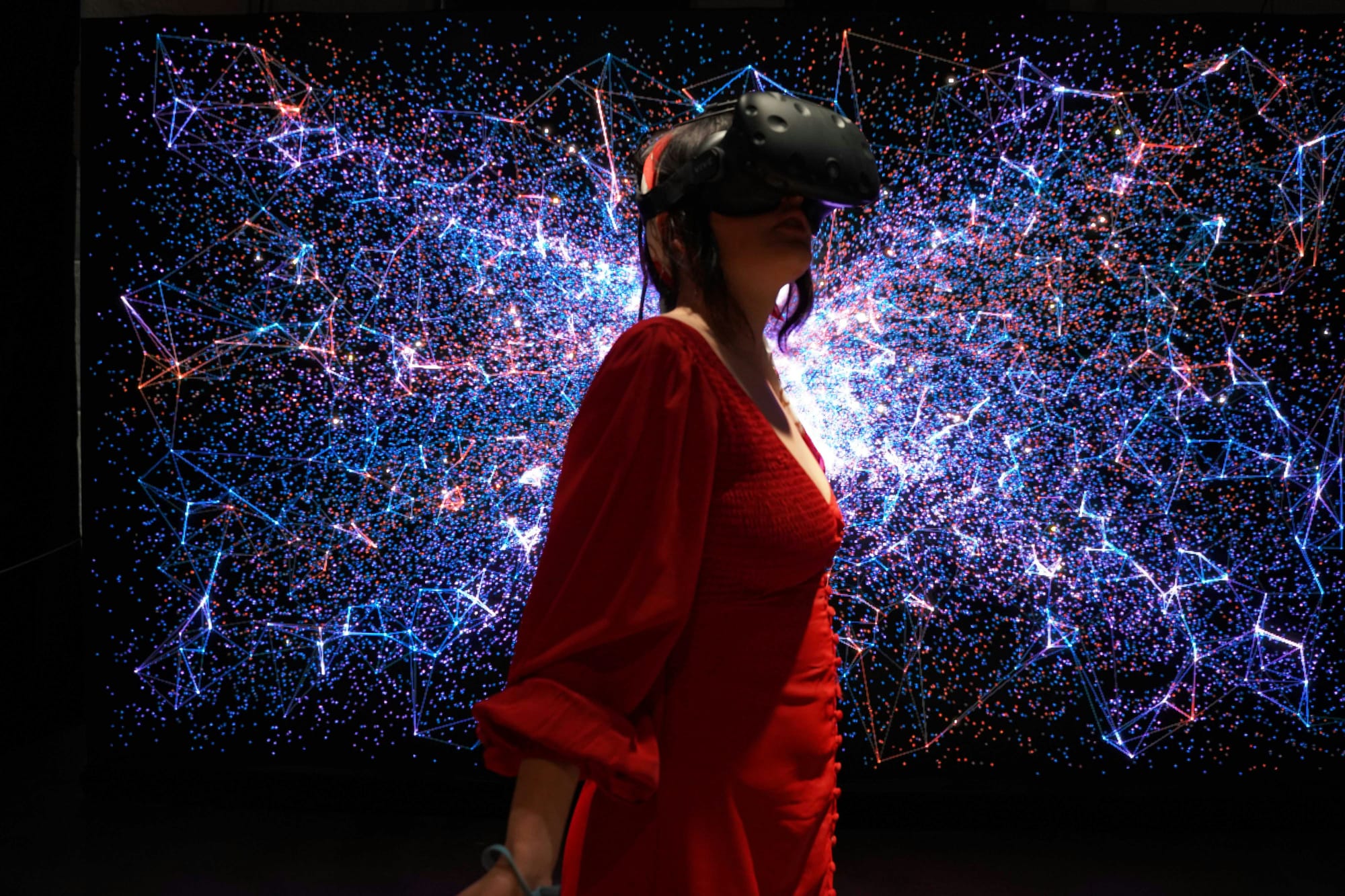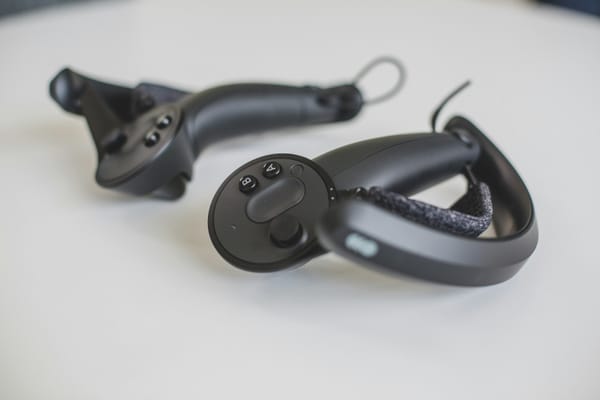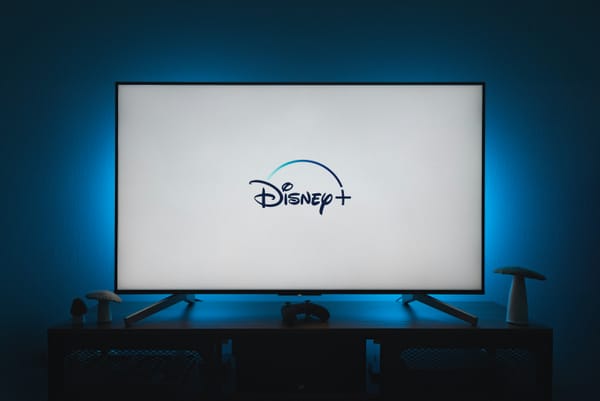21 Most Practical Ways To Use VR Data Visualization
Dive into a visual realm. Elevate insights with VR data visualization. Immerse yourself in data like never before for a smarter understanding.

Step into the immersive world of VR data visualization where complex data transforms into interactive visualizations, bringing insights to life. Explore the possibilities of virtual workspaces as you navigate through datasets in a three-dimensional space, gaining a deeper understanding of information. Dive into this innovative technology that revolutionizes the way we interact with and comprehend data, opening new avenues for analysis and decision-making.
Table of Contents
- What Is VR Data Visualization?
- Benefits of VR Data Visualization
- 21 Most Practical Ways To Use VR Data Visualization
- Complete Step-by-Step Guide On How To Use Fluid's Free Apple Vision Pro Alternative for Meta Quest
- Get The Apple Vision Pro Experience for A Fraction of The Cost With Fluid
What Is VR Data Visualization?

VR data visualization refers to the use of virtual reality technology to represent and interact with data in a three-dimensional space. This innovative approach allows users to immerse themselves in data sets, explore information from different perspectives, and gain deeper insights through interactive experiences. By leveraging VR technology, users can visualize complex data in a more intuitive and engaging manner, making it easier to identify patterns, trends, and anomalies that may not be apparent in traditional two-dimensional charts or graphs.
Benefits of VR Data Visualization
VR data visualization offers numerous benefits, including enhanced data exploration, improved decision-making, and increased collaboration among team members. By providing a more immersive and interactive environment, VR data visualization tools enable users to manipulate data in real-time, conduct in-depth analyses, and share insights with others in a more engaging way. This technology is particularly valuable for industries such as healthcare, finance, and engineering, where complex data sets require innovative approaches to visualization and analysis.
Applications of VR Data Visualization
The applications of VR data visualization are diverse and far-reaching. From medical imaging and scientific research to architectural design and marketing analytics, VR data visualization can be applied across various industries to streamline processes, enhance communication, and drive innovation. By harnessing the power of VR technology, organizations can unlock new possibilities for data analysis, simulation, and storytelling, leading to improved efficiency, productivity, and decision-making.
Embrace the Future with Fluid
Experience the next level of VR data visualization with Fluid, a cutting-edge platform that transforms your VR headset into a spatial computer. By using Fluid on the Meta Quest, you can create flexible workspaces, enjoy cloud gaming, and immerse yourself in entertainment like never before. With the ability to place large screens anywhere in augmented reality, Fluid empowers you to break free from physical screens and unleash your creativity in a virtual environment.
Take advantage of this game-changing technology today and turn your VR headset into a spatial computer with Fluid.
Related Reading
- Vr Workplace
- Augmented Reality In The Workplace
- Vr Work From Home
- Vr Training
- Vr Design
- Vr Programs
- Vr In Business
- Vr Marketing
- Vr Conferencing
- Vr Meetings
- Virtual Reality Business Applications
Benefits of VR Data Visualization

Immersive Data Exploration
VR Data Visualization offers a revolutionary way to explore data in a more immersive and interactive manner. By visualizing data in a virtual environment, users can gain a deeper understanding of complex datasets through spatial awareness and interactive manipulation. This immersive experience allows for better insights and discoveries that may not be as easily achievable in traditional 2D data visualization methods.
Enhanced Data Interpretation
One of the key benefits of VR Data Visualization is the ability to enhance data interpretation through interactive storytelling. Users can create dynamic visualizations that guide viewers through the data, helping them make sense of complex information more effectively. By adding layers of interactivity and context to the data, VR visualization enables users to uncover patterns, trends, and relationships that may have been overlooked in traditional static charts or graphs.
Collaborative Data Analysis
VR Data Visualization promotes collaborative data analysis by allowing multiple users to interact with the data simultaneously in a shared virtual space. This real-time collaboration enables teams to work together, regardless of their physical location, fostering creativity, communication, and problem-solving. By breaking down geographical barriers, VR visualization tools facilitate seamless teamwork and knowledge sharing among team members.
Spatial Data Representation
Through VR Data Visualization, data can be represented in a spatial context, providing a more intuitive way to explore and understand information. By leveraging the depth and scale of virtual environments, users can place data points in a 3D space, enabling them to perceive relationships and patterns in a more natural and immersive way. This spatial representation enhances the comprehension of data, making it easier to grasp the significance of various data points and their interconnections.
Decision-Making Support
VR Data Visualization can significantly support decision-making processes by enabling users to interact with data in a more meaningful and engaging manner. By visualizing data in a virtual environment, decision-makers can explore different scenarios, conduct simulations, and test hypotheses to inform strategic choices. The immersive nature of VR visualization empowers decision-makers to gain valuable insights quickly and make well-informed decisions based on a deeper understanding of the data.
Unlocking Infinite Possibilities
Fluid allows you to create a flexible workspace in XR on the Meta Quest. With Fluid, you can place big screens anywhere in augmented reality. Fluid enables flexible workspaces and entertainment, cloud gaming, and much more. The most game-changing feature of all: Fluid allows you to create a virtual workstation with VR/AR using the Meta Quest, with virtually any screen size. You can create your own $5,000+ work setup in VR/AR, and take it wherever you’d like to.
Fluid solves remote working and remote work collaboration, long-distance relationships, remote teams, small startups with distributed co-founders, gamers that want a portable VR/AR gaming set, students, and much more. Turn your VR headset into a spatial computer for free today with Fluid. Break free from physical screens, watch content on a big screen from anywhere, get into a deep flow state by being immersed in your work, and create a flexible workspace anywhere with Fluid.
21 Most Practical Ways To Use VR Data Visualization

1. Immersive Data Exploration
VR data visualization offers a groundbreaking way to explore data in a fully immersive environment. By donning a VR headset, users can step inside their data visualizations, allowing for a deeper understanding of complex datasets. This immersive experience enhances data exploration by providing a spatial context that is not possible with traditional 2D visualizations.
2. Collaborative Data Analysis
VR data visualization enables real-time collaboration among team members regardless of their physical location. By sharing a virtual space, team members can interact with the same data visualizations simultaneously, fostering efficient communication and idea sharing. This collaborative environment enhances teamwork and decision-making processes.
3. Interactive Dashboards
Interactive dashboards in VR allow users to interact with data visualizations using hand gestures and controllers, providing a more intuitive and engaging way to explore data. Users can manipulate data points, zoom in on specific areas, and customize visualizations on the fly, enhancing the overall user experience and data analysis capabilities.
4. 3D Data Modeling
VR data visualization empowers users to create 3D models of their data, offering a new perspective on information that goes beyond traditional 2D charts and graphs. By visualizing data in three dimensions, users can uncover patterns and relationships that may not be apparent in 2D visualizations, leading to deeper insights and understanding.
5. Spatial Data Representation
Spatial data representation in VR allows users to place data visualizations in virtual space, creating a more organized and immersive way to view data. By arranging visualizations spatially, users can better understand the relationships between different datasets and gain a holistic view of their data landscape.
6. Data Storytelling
VR data visualization provides a dynamic platform for data storytelling, allowing users to create narratives around their data visualizations. By guiding users through immersive experiences that highlight key insights and trends, data storytelling in VR enhances engagement and facilitates knowledge sharing in a more impactful way.
7. Virtual Data Tours
Virtual data tours enable users to navigate through their data visualizations in a guided and interactive manner. By taking users on a virtual journey through different data points and visualizations, virtual data tours enhance comprehension and engagement, making data exploration more engaging and informative.
8. Real-Time Data Monitoring
VR data visualization allows for real-time monitoring of data streams and live datasets in a virtual environment. By visualizing data updates and changes as they happen, users can make informed decisions quickly and efficiently, leading to improved situational awareness and data-driven insights.
9. Simulation and Predictive Analytics
VR data visualization can be used for simulation and predictive analytics, allowing users to test scenarios and predict outcomes in a virtual environment. By running simulations and analyzing predictive models in VR, users can gain valuable insights into future trends and make data-driven decisions with confidence.
10. Training and Education
VR data visualization is a powerful tool for training and education, providing immersive and interactive experiences for learners. By visualizing complex datasets and concepts in a virtual environment, VR data visualization enhances learning outcomes and retention, making it an ideal tool for educational purposes.
11. Customer Insights and Market Research
VR data visualization can be utilized for gaining customer insights and conducting market research in a more engaging and informative way. By visualizing customer data and market trends in VR, businesses can extract valuable insights and make data-driven decisions that drive growth and innovation.
12. Remote Data Collaboration
VR data visualization facilitates remote data collaboration among team members working in different locations. By sharing a virtual space for data analysis and visualization, teams can collaborate in real-time, regardless of physical distance, fostering efficient communication and collaboration.
13. Data-driven Decision Making
VR data visualization empowers users to make data-driven decisions by providing a visual and immersive way to analyze and interpret data. By visualizing data in VR, users can gain deeper insights and understanding, leading to more informed decision-making processes and strategic planning.
14. Augmented Reality Overlays
VR data visualization can include augmented reality overlays that superimpose data visualizations onto the user's real-world environment. By blending virtual data visualizations with the physical world, users can interact with data in a more contextual and intuitive way, enhancing the overall user experience.
15. Remote Work Collaboration
VR data visualization supports remote work collaboration by providing a shared virtual workspace for team members to analyze and visualize data together. By collaborating in VR, remote teams can work more efficiently and effectively, fostering teamwork and communication despite physical distance.
16. Product Development and Prototyping
VR data visualization can be used for product development and prototyping, allowing designers and engineers to visualize and iterate on product concepts in a virtual environment. By creating 3D models and visualizations in VR, teams can streamline the product development process and bring ideas to life more effectively.
17. Risk Management and Analysis
VR data visualization enables risk management and analysis by visualizing complex risk factors and scenarios in a virtual environment. By simulating risks and analyzing data in VR, organizations can make more informed decisions and develop strategies to mitigate potential risks, enhancing overall risk management practices.
18. Trend Forecasting and Analysis
VR data visualization can be used for trend forecasting and analysis, allowing users to visualize and analyze trends in a virtual environment. By visualizing historical data and predicting future trends in VR, users can make proactive decisions and capitalize on emerging opportunities in their respective industries.
19. IoT Data Visualization
VR data visualization can integrate with IoT devices to visualize real-time data streams and sensor data in a virtual environment. By visualizing IoT data in VR, users can monitor and analyze connected devices and sensors, enabling better decision-making and optimization of IoT systems and networks.
20. Supply Chain Visualization
VR data visualization can optimize supply chain management by visualizing supply chain data and logistics in a virtual environment. By visualizing supply chain processes and analyzing data in VR, organizations can identify bottlenecks, optimize workflows, and improve overall supply chain efficiency and performance.
21. Geospatial Data Mapping
VR data visualization supports geospatial data mapping by visualizing geographic data and spatial relationships in a virtual environment. By creating interactive maps and visualizations in VR, users can explore geospatial data in a more immersive and informative way, leading to better understanding and analysis of geographic information.
Fluid's XR Experience on Meta Quest for Ultimate Flexibility and Productivity
Fluid allows you to create a flexible workspace in XR on the Meta Quest. With Fluid, you can place big screens anywhere in augmented reality. Fluid enables flexible workspaces and entertainment, cloud gaming, and much more. The most game-changing feature of all: Fluid allows you to create a virtual workstation with VR/AR using the Meta Quest, with virtually any screen size. You can create your own $5,000+ work setup in VR/AR, and take it wherever you’d like to.
Fluid solves remote working and remote work collaboration, long-distance relationships, remote teams, small startups with distributed cofounders, gamers that want a portable VR/AR gaming set, students, and much more. Turn your VR headset into a spatial computer for free today with Fluid. Break free from physical screens, watch content on a big screen from anywhere, get into a deep flow state by being immersed in your work, and create a flexible workspace anywhere with Fluid.
Related Reading
- Virtual Reality In Healthcare
- Virtual Reality In The Classroom
- Virtual Reality In Architecture
- Virtual Reality Therapy
- Teams Vr
- Working In Vr
- Vr Collaboration
- Vr Educational Apps
- Virtual Reality Presentation
- Vr Prototyping
- Enterprise Virtual Reality
- Immersed Vs Virtual Desktop
- Vr Productivity Apps
- Virtual Reality For Training Employees
- Virtual Reality Business Applications
- Benefits Of Virtual Reality In Business
Complete Step-by-Step Guide On How To Use Fluid's Free Apple Vision Pro Alternative for Meta Quest
Watch these videos to learn more about what Fluid is:
Watch this step-by-step guide to learn how to use Fluid's Free Apple Vision Pro Alternative for Meta Quest:
Get The Apple Vision Pro Experience for A Fraction of The Cost With Fluid
Fluid revolutionizes the XR workspace by offering a dynamic and flexible environment through Meta Quest. It enables users to place large screens anywhere in augmented reality, transforming how we interact with data. This flexibility opens up new possibilities for VR data visualization, allowing users to customize their workspace according to their needs and preferences.
Virtual Workstation Capabilities
One of the most revolutionary features of Fluid is its ability to create a virtual workstation with VR/AR using the Meta Quest. This feature empowers users to design their ideal work setup with virtually any screen size, breaking free from the constraints of physical monitors. By harnessing the power of VR data visualization, users can immerse themselves in their work like never before, enhancing productivity and creativity.
Enhancing Remote Collaboration
Fluid addresses the challenges of remote working and collaboration by providing a platform for seamless interaction in VR/AR. Whether it's remote teams, long-distance relationships, or distributed startups, Fluid enables real-time collaboration and communication in a virtual environment. This capability transforms how teams work together, fostering creativity and innovation regardless of physical distance.
Cloud Gaming and Entertainment
Apart from work-related tasks, Fluid also caters to the entertainment and gaming community by offering a unique cloud gaming experience in VR/AR. Users can enjoy their favorite games and content on a large virtual screen, creating an immersive entertainment hub. By merging gaming and visualization capabilities, Fluid enhances the overall VR experience, attracting gamers and entertainment enthusiasts alike.
Empowering Students and Gamers
With Fluid, students can transform their VR headset into a spatial computer, opening up new avenues for learning and exploration. Whether it's virtual classrooms or educational content, Fluid enhances the educational experience through interactive visualizations and immersive environments.Gamers can create a portable VR/AR gaming setup with Fluid, bringing their gaming experience to a whole new level of immersion and flexibility.
Seamless Integration and Portability
Fluid offers a seamless integration with Meta Quest, allowing users to harness the full potential of VR data visualization with ease. Its portability enables users to take their customized workspace wherever they go, breaking barriers to creativity and productivity. By creating a flexible workspace anywhere, Fluid empowers users to design their ideal work environment and entertainment hub in the world of XR.



